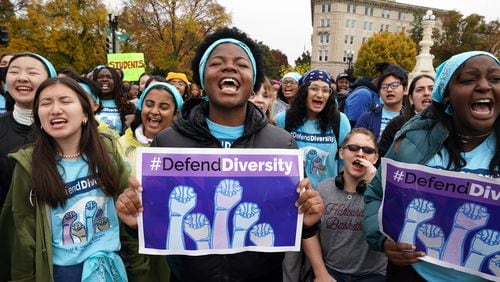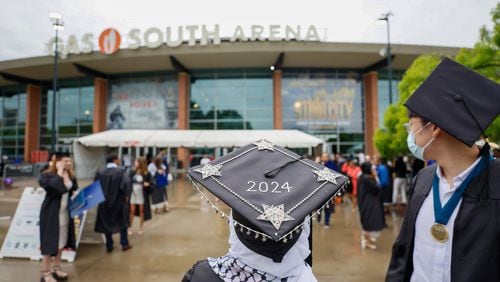In a guest column, Nicholas Barry Creel, an assistant professor of business law at Georgia College and State University, discusses the likelihood the U.S. Supreme Court will outlaw the consideration of race in college admissions.
Creel suggests campuses have other avenues to create racial diversity among their student bodies. He makes a case for basing admissions on economic condition, which he says can also foster diversity.
The University System of Georgia does not consider race in its admissions process.
By Nicholas Barry Creel
With the U.S. Supreme Court taking up the latest challenge to universities using race as a factor in their admissions process, it is now seemingly inevitable the 6-3 conservative majority will ensure that race-based affirmative action is coming to an end in higher education in a few months.
While many universities will lament this will obliterate diversity on our campuses, it doesn’t have to if we prepare accordingly. Affirmative action has been a highly effective way to get a more diverse student body, but other reasonable mechanisms exist to achieve this same goal and can perhaps do so without developing the stigma of some students as not having “earned their place.”
It should first be pointed out that, despite what some conservative commentators might hold, achieving a diverse student body isn’t just a noble goal meant to bring about the smug satisfaction of liberal university professors. Indeed, diversity is a pedagogically useful quality in a student body. A homogenous classroom is one without meaningfully different viewpoints, which leads to stale discussions and little value added relative to what one can get out of a textbook on their own time for a fraction of the price of a college degree.
Students need to be confronted with worldviews different from their own, not to change their minds but to challenge them. Just as a muscle that never meets resistance atrophies, a mind whose beliefs are never questioned can never grow to its full potential.
Further justifying policies that increase racial diversity is that without being exposed to people with different lived experiences, the social aspect of the college experience will itself be lacking if our campuses become monocultures. Students, in their daily campus interactions, effectively teach one other about themselves. The social skills they learn from such interactions will ultimately fade away if our schools become unrepresentative of the population at large.
Evidence of this is apparent when we see that having attended college greatly improves attitudes toward those of other races. Given that most U.S. high schools are still overwhelmingly affected by de facto segregation, a college education on a diverse campus is a vital tool to improve racial tolerance in society.
Even so, despite how important racial diversity is to our campuses, affirmative action admissions policies are highly unlikely to withstand their latest legal challenge. Race-based discrimination, which affirmative action essentially is as it gives preferences to those in some racial groups but not others, must pass what is known as “strict scrutiny” to be permitted. That is to say, racial discrimination can be allowed but it must meet an incredibly high bar that ensures said discrimination serves a compelling government interest and does so in a narrowly tailored manner in order to achieve that goal.
In the past, the Supreme Court has only ever narrowly voted to allow for affirmative action to be used in university admissions programs. In a 2003 case on the topic, the court said it believed these programs should not be allowed to extend for more than perhaps another 25 years or so, meaning overturning it now would barely put them ahead of that schedule. As such, with the 6-3 conservative majority now in the driver’s seat, it is highly implausible that affirmative action has any hope of surviving the challenges it now faces.
Universities can still pursue our commitment to fostering racially diverse campuses in other ways. For example, we know poverty is not racially random. Specifically, Blacks and Hispanics have more than double the poverty rates of whites and substantially lower levels of household income.
So, rather than discriminating based on race, we could instead give overt preference to those in lower socioeconomic demographics. Given how overrepresented racial minorities are in the bottom wealth and income quartiles, this would effectively foster a more racially diverse campus, despite the fact that we would be operating without knowledge of the applicant’s race. In other words, we can adopt a race-blind admissions process that nevertheless ensures greater racial diversity.
What’s more, discrimination based on one’s economic condition need not pass the high bar of strict scrutiny. It is subject to a far more forgiving standard known as the rational basis test. Under this test, the discriminatory action being challenged must only be rationally related to a legitimate government interest.
Giving the poorest among us a better chance at improving their lot in life with a college education is most assuredly a legitimate government interest that is rationally achieved by an admissions system that accounts for how wealthy one’s family is.
About the Author








